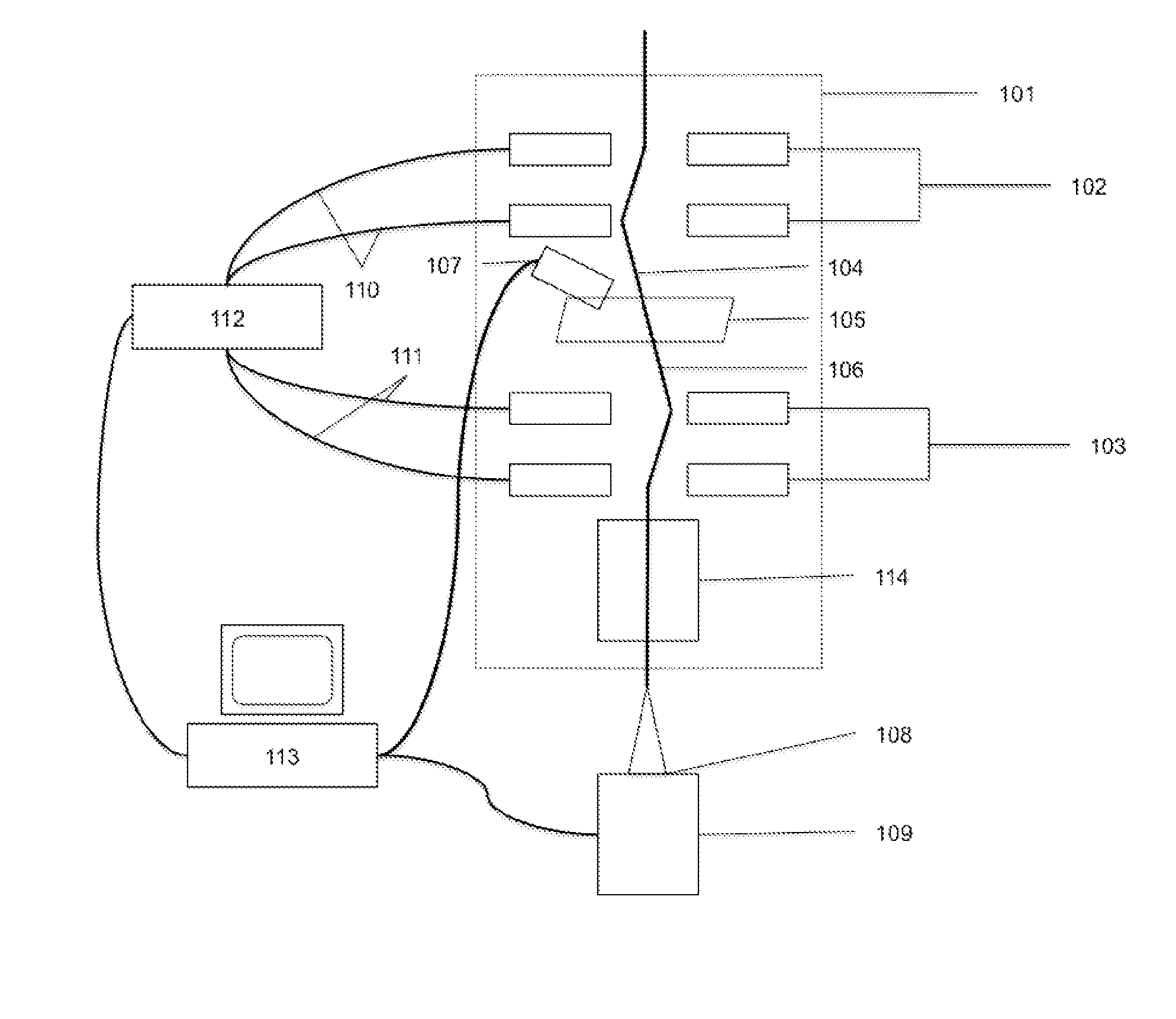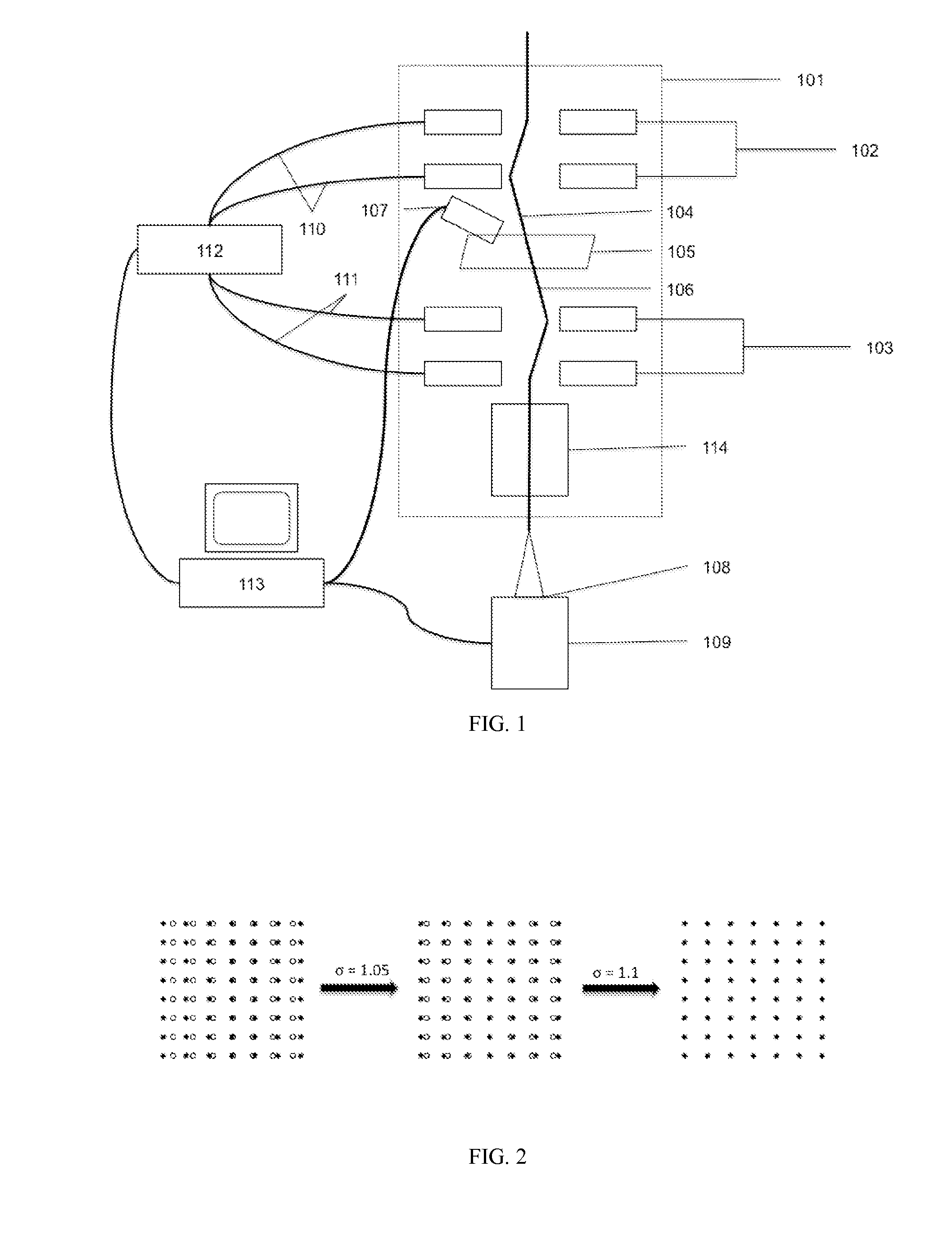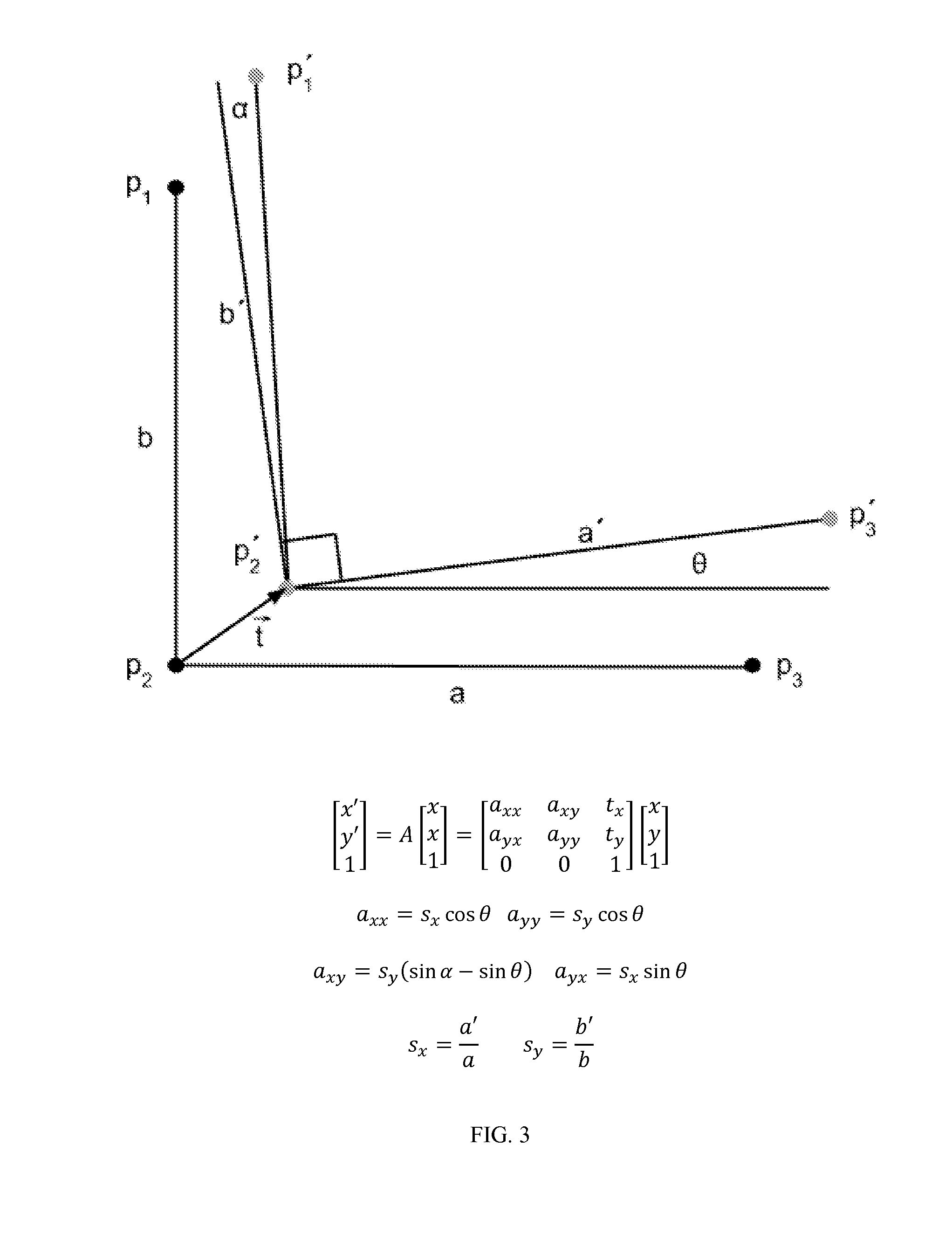System and process for measuring strain in materials at high spatial resolution
a technology of high spatial resolution and system and process, applied in the field of electron microscopy system and process, can solve the problems of weak changes in the beam intensity distribution, the accuracy required for some measurements, which can be less than 0.1% strain, and the inability to achieve the accuracy of those methods, so as to reduce the dynamical diffraction
- Summary
- Abstract
- Description
- Claims
- Application Information
AI Technical Summary
Benefits of technology
Problems solved by technology
Method used
Image
Examples
Embodiment Construction
[0014]The present invention has utility as a system and a process of performing PED in TEM. In one embodiment of the present invention, a TEM with an accelerating voltage between 20 kV and 1.5 MV is fitted with a device (the “Precession Device”) that applies signals to the TEM that produce a time-dependent change in the angle of the incident electron beam. The Precession Device also applies signals to the TEM to stop the motion of the diffraction patterns that is induced by the change of angle of the incident electron beam. In specific embodiments, the incident electron beam is a small diameter probe that produces NBD patterns and raster scanned (“STEM”) images. The TEM is also fitted in specific embodiments with a camera (the “Camera”) to record TEM images and / or diffraction patterns. A computer, through software running on the computer (the “Software”), controls various operational aspects of the TEM, the Precession Device, and the Camera. The Software acquires PED patterns using ...
PUM
 Login to View More
Login to View More Abstract
Description
Claims
Application Information
 Login to View More
Login to View More - R&D
- Intellectual Property
- Life Sciences
- Materials
- Tech Scout
- Unparalleled Data Quality
- Higher Quality Content
- 60% Fewer Hallucinations
Browse by: Latest US Patents, China's latest patents, Technical Efficacy Thesaurus, Application Domain, Technology Topic, Popular Technical Reports.
© 2025 PatSnap. All rights reserved.Legal|Privacy policy|Modern Slavery Act Transparency Statement|Sitemap|About US| Contact US: help@patsnap.com



